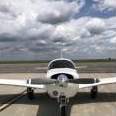brake maintenance Brake Bleeding Woes
-
Members Online
- DRCGAI
- SeaLand
- carusoam
- whiskytango
- carguy4471
- 0TreeLemur
- StevenL757
- MikeOH
- toto
- Fly Boomer
- skydvrboy
- xtachx
- traumamed
- KurtWhite
- AH-1 Cobra Pilot
- Chester
- LANCECASPER
- FlyingDude
- lanejacobs84
- JoeCrow54
- phrogpilot73
- Schllc
- zgasman
- EricJ
- N201MKTurbo
- 201er
- cferr59
- PhateX1337
- GMBrown
- Speed Merchant
- Rmnpilot
- AndreiC
- Red Leader
- Aerodon


Recommended Posts
Join the conversation
You can post now and register later. If you have an account, sign in now to post with your account.